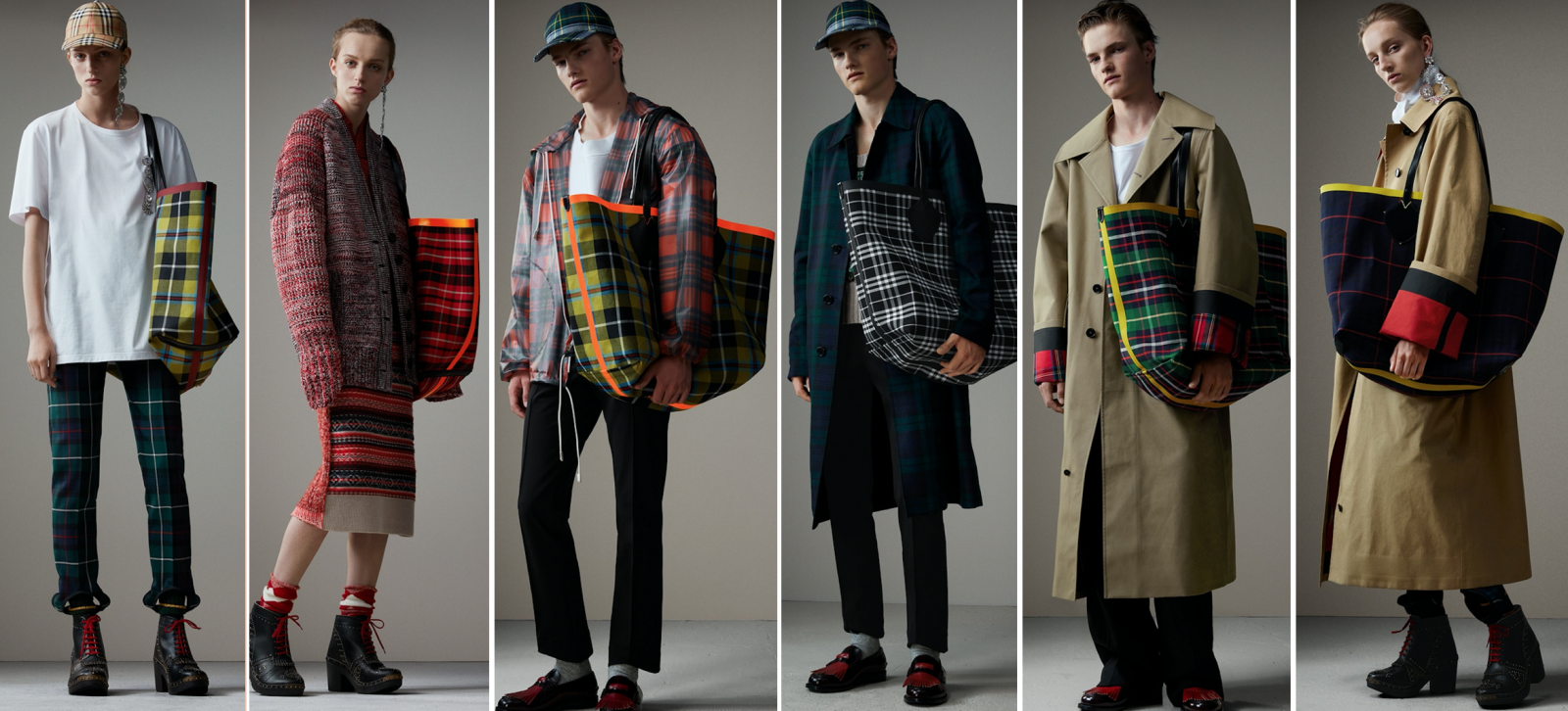
Burberry has been in desperate need of a revamp of major proportions. The London-based brand has fallen behind its competitors in almost every way in recent years. While Gucci completely re-invented itself under the watch of Alessandro Michele, Balenciaga welcomed Demna Gvasalia, and Louis Vuitton boosted hype with buzzy partnerships, such as a collab with Supreme, Burberry has fallen by the wayside.
But that is not all. Burberry has struggled to perform in light of waning demand in China, something that has proven particularly troubling for the storied brand, as it derives roughly 40 percent of its retail sales from Chinese shoppers.
However, beginning with its collaboration with Russian designer Gosha Rubchinskiy, and now thanks to the See Now-Buy Now Fall/Winter 2017 collection that Burberry unveiled this weekend, things appear to be looking up for the brand.
In a move to ideally reinvigorate sales – and media buzz – creative director Christopher Bailey, who was until recently tied up in a dual-role as creative director and chief executive, gave the British brand a whole new vibe. The result? Burberry is younger, hipper, fresher, and downright more appealing that it has been in years.
Bailey showed a “high-low, new world meets old world mix [which] made for a pretty intoxicating brew, and though many of the key touchstones were familiar—Fair Isle sweaters, argyle socks, and penny loafers, to name a few—the clothes born out of his culture clash had a modern tension about them that was entirely fresh and new,” per Vogue.
While the garments, which Bailey described as “a little more honest, a little less polished,” will certainly garner more traction than some of the brand’s other recent offerings, there was something much more noteworthy in the mix. Bags – oversized plaid bags, which undoubtedly make their way into street style photos (via fashion’s elite tastemakers) and the arms of extra-industry individuals (read: normal people with a taste for fashion), as well.
The power of these reversible, unisex bags is not to be underestimated. Unlike some of its biggest competitors, Burberry has, for years now, lacked an “it” bag, while similarly-situated brands have been busy churning out covetable accessories.
In addition to helping to boost desirability (nothing stands to create demand like seeing your favorite influencer – whether it be a K-pop star or an all-powerful Instagram celebrity – with a product), “it” bags, like other more accessible items (relative to ready-to-wear), tend to help boost brands’ bottom lines. Unlike garments – which are generally more difficult purchases; for instance, consumers must take sizing/fit into account when purchasing clothing more significantly than compared to other luxury items – bags are the money makers for most brands.
“Most runway pieces never get produced. They’re marketing exercises. The legacy brands aren’t in the fashion business anymore. They’re selling handbags,” Cameron Silver, founder of Decades, the upscale Los Angeles-based vintage store, told the Daily Beast earlier this year. And he is right.
According to a report released by Exane BNP Paribas, accessories – namely, handbags – dominate in the luxury market. They represent one of the few categories with high sales densities and full-price sell-through rates. As of 2016, they account for almost 30 percent of the total global luxury market, up from just 18 percent in 2003.
For Gucci, Yves Saint Laurent, Bottega Veneta, and Balenciaga’s parent company, Kering, leather goods represent over 50 percent of the €7.9 billion that the conglomerate’s luxury division earned in revenue for the 2015 fiscal year. Ready-to-wear accounted for only 16 percent. At Louis Vuitton – by far, LVMH’s most valuable and recognizable brand, accounting for no less than one-third of total group sales and almost half of its profit, per the New York Times – bags play a significant role.
But back to Burberry. Its bags – which are already available for sale in “giant” ($1,795) and “medium” ($1,150) sizes on Burberry’s site – will likely take off in a significant way. Not only does Burberry have an fresh injection of novelty and cool, if past practice is any indication, all things Demna Gvasalia-for-Balenciaga and Vetements have the power to influence consumers’ purchases (directly or otherwise), and Burberry’s giant bag is a more affordable alternative to Balenciaga’s striped oversized tote, which will set you back $2,550.
Pair Burberry’s brand new bags with its recently-ramped up advertising on China’s wildly popular WeChat app, and this might just be the beginning of a turnaround success story.










